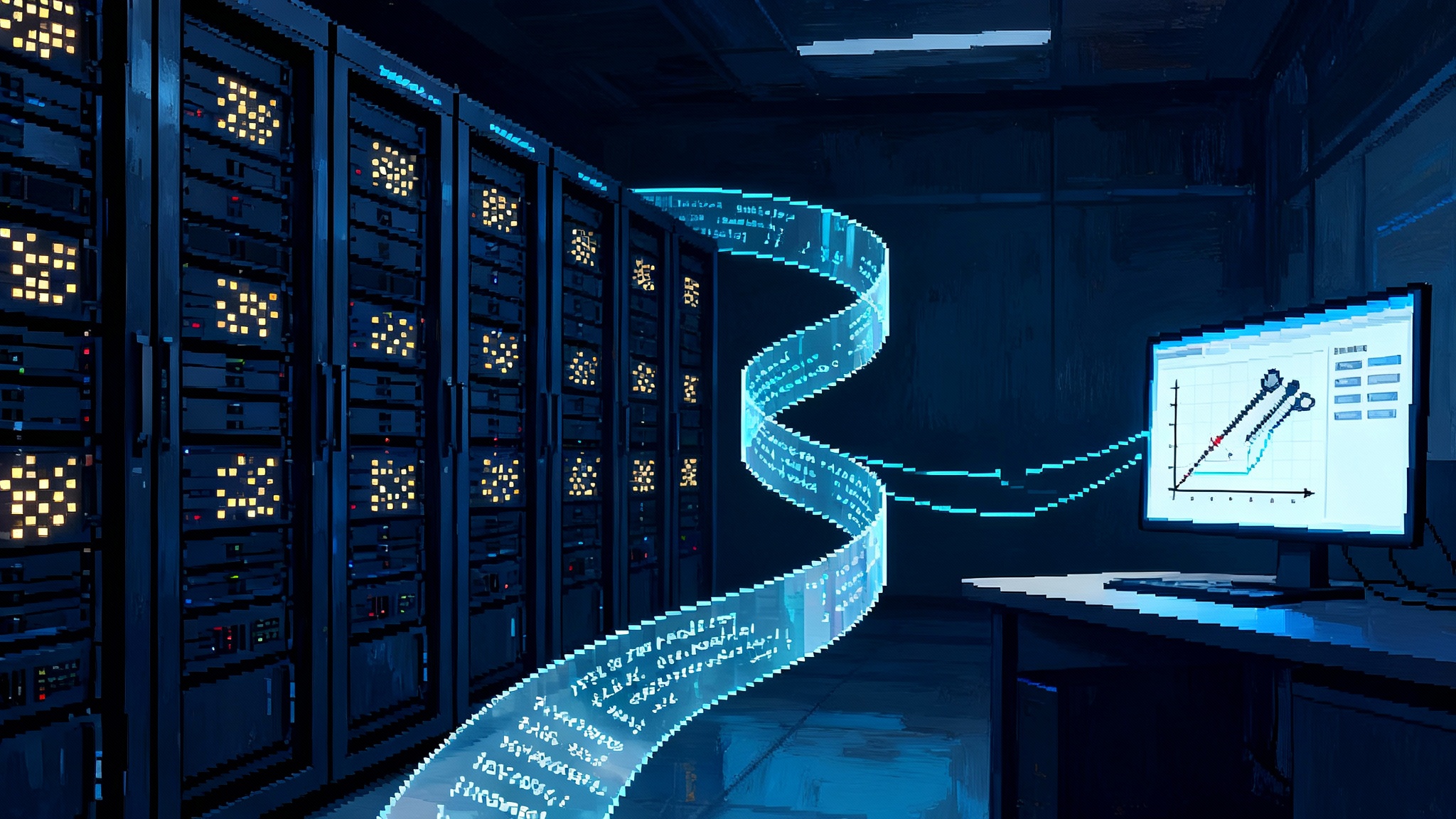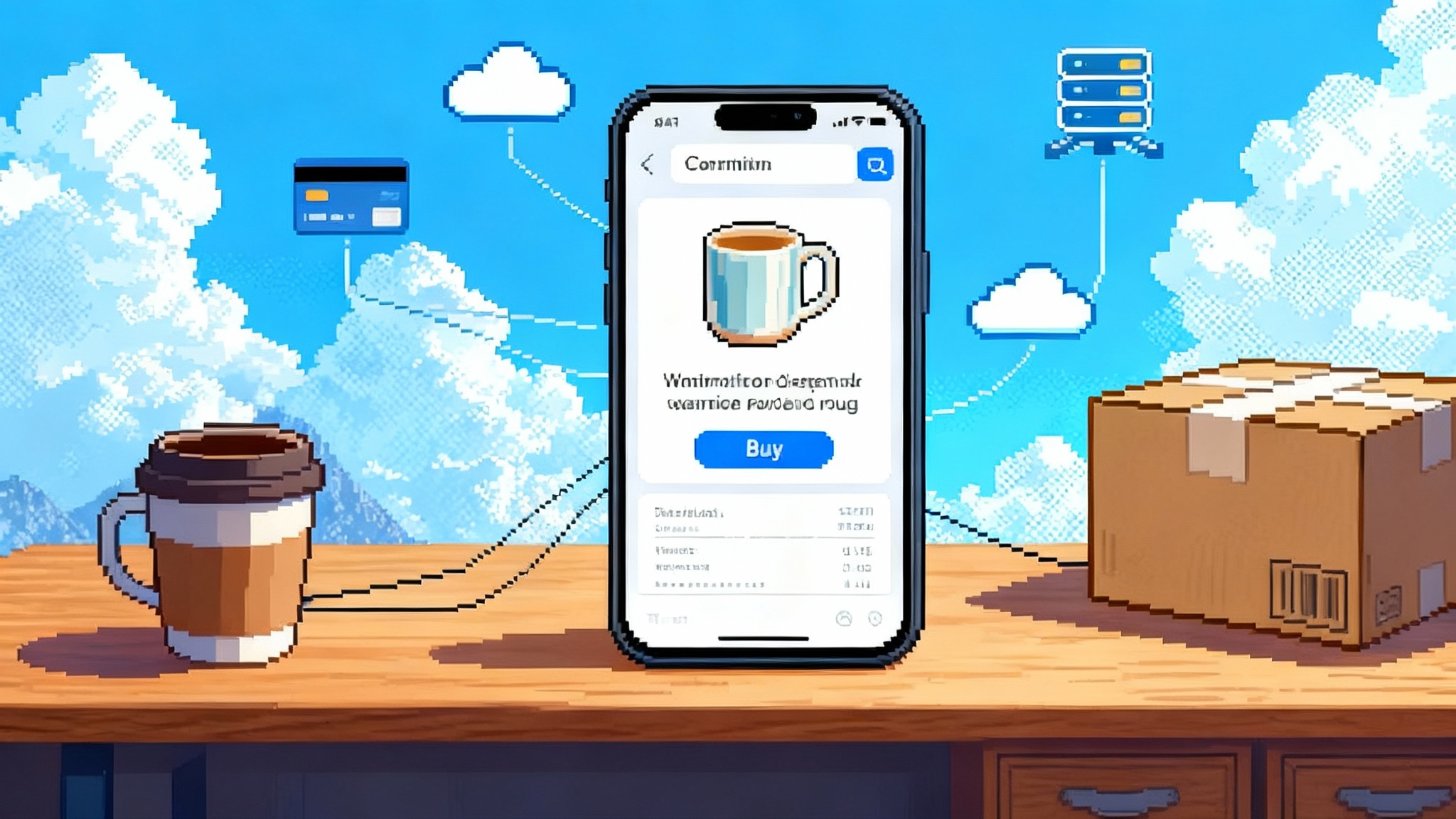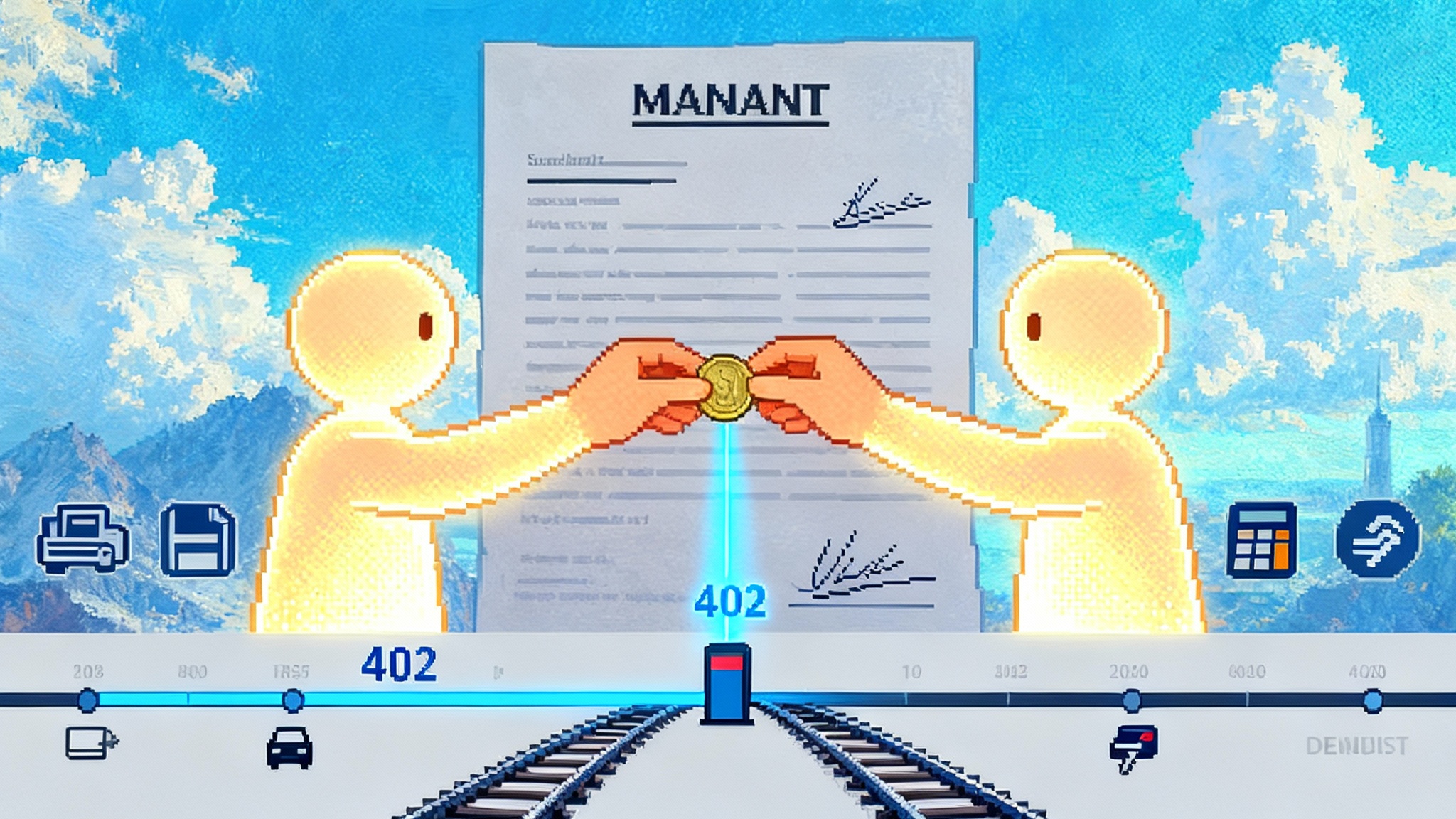OpenAI and Jony Ive’s pocket AI sparks the ambient agent era
Fresh reporting points to a pocketable, always-on assistant from OpenAI and Jony Ive. If it ships by 2026, hardware becomes the agent runtime, with on-device context memory reshaping interactions, app distribution, and trust.
The ambient agent just got a body
A year ago, the idea of carrying a computer with no screen and no app grid sounded like a novelty. On October 4, 2025, the Financial Times report on screenless assistant suggested OpenAI and Jony Ive are progressing on a palm sized, always on assistant that listens, looks, and remembers context. If this device ships in the next eighteen months, it could mark a pivot point where the hardware itself becomes the agent runtime.
Think of the device as a pebble shaped companion that lives in your pocket or on your desk. It is not a tiny phone. It is a host for a persistent software agent that senses your environment, builds a private memory of your routines, and acts on your behalf. The screen leaves the stage so the agent can step into it.
Hardware becomes the agent runtime
In the personal computer era, the operating system was the runtime for applications. In the smartphone era, the phone’s operating system was the runtime for mobile apps. In the ambient agent era, the physical object is the runtime for an agent that spans cloud models and local context. The device sets the rules for sensing, privacy, and real time responsiveness. It also carries the identity, the keys, and the memory that make the agent feel like a familiar helper rather than a transient chatbot. This shift echoes the platform inflection described in AP2 and x402 flip the switch.
That shift has three consequences:
-
The bill of materials is now a product strategy. Microphones, cameras, inertial sensors, ultra wideband, and a neural engine determine what the agent can perceive and how quickly it can react. Silicon is no longer just about benchmarks. It defines the skills the agent can learn.
-
The enclosure and attachment points decide use cases. A clip that sits on a jacket invites short voice exchanges in motion. A pocket stone invites quiet taps, squeezes, and whispered prompts. A desk stand invites longer conversations and collaboration with a laptop. Industrial design becomes an interaction model.
-
The security model is the platform. Secure enclaves, local vector databases, and permission chips control what the agent remembers and when it can act. If the memory store rides on device and only syncs with explicit consent, the product earns trust and opens a path to more proactive behavior.
Context memory at the edge, explained simply
Large models can predict text. They cannot, by themselves, remember your life. Context memory is the missing layer that turns a model into a companion. The idea is straightforward. The device records small, structured facts about your world and stores them in a local database that the agent can query.
Imagine a day:
- Morning: You pick up the device, say “morning,” and it logs that you left home at 7:42 a.m. It infers that you head to the gym on Tuesdays when your bag weight and steps spike before 8.
- Noon: It hears you say “lunch with Priya next week” during a hallway chat and turns that into a calendar suggestion with Priya’s contact pulled from your address book. It asks for a yes with a light haptic and a glance at your watch.
- Evening: It notices that your commute is slower than usual and silently texts your partner that you will arrive at 6:20 p.m. only if you have allowed it to message a small circle.
This is not surveillance. Done right, it is a local memory prosthetic. The device stores lightweight embeddings and encrypted snippets, prunes them regularly, and exposes them through a simple policy engine. The agent queries for “last gym time,” “open task from hallway,” or “usual arrival variance,” then decides. The private memory is on the edge. The heavy reasoning happens in the cloud only when needed.
The benefit to human computer interaction is clear. We move from command and response to shared context and delegation. The agent can ask better clarifying questions. You can speak less. The friction drops because the system remembers enough of your recent life to do the obvious thing.
Why this could rewrite the app ecosystem
The phone put apps behind icons. The agent will put capabilities behind intents, accelerating the connector standards outlined in the USB-C moment for AI agents. That means a new distribution model.
- From “I open a ride hailing app and tap to book” to “get me to the airport by 4 p.m.” The agent negotiates with services you have approved to satisfy the intent.
- From “I open a grocery app to reorder” to “stock the usual breakfast for the week.” The agent calls a list service, checks your pantry camera, and confirms substitutions in a short back and forth.
- From “I check three calendars and two chat threads” to “schedule the first hour we are all free next week.” The agent proposes a time, explains conflicts, and sends holds.
For developers, this means skills and services rather than full screen experiences. The winners will expose clean actions with verifiable outcomes, tight privacy scopes, and clear prices. A skill that can be composed inside many intents will beat a beautiful standalone interface that sits unopened on a home screen.
The blockers that could decide the race
Every shift has friction. This one has five.
-
Compute scarcity and the supply chain of intelligence. Training and serving high quality models is expensive. The world still struggles to build enough advanced chips and data centers. OpenAI leadership is on a global tour to secure memory, packaging, and foundry capacity, a reminder that hardware constraints shape software ambition. Reuters details Altman's tour. If cloud inference remains scarce, the device must lean harder on local models, on device summarization, and strict caching. Expect hybrid stacks that route easy tasks to local silicon and reserve cloud calls for novel requests.
-
Privacy by design, not policy. The agent will be trusted only if users see and control what it stores. This is not a terms of service checkbox. It is a design system. Clear physical signals when sensors are hot. Per action consent for new skills. A Memory Journal that you can browse, edit, and nuke with a long press. A hard switch that kills radio and capture. If the industry treats privacy as a first class feature, proactive agents become acceptable. If not, the agent retreats to a toy.
-
Personality and social comfort. Voice and tone matter more when there is no screen. The agent must be direct, brief, and adaptive. It should adjust to your register at work versus home. It should recognize when silence is better than speech. Companies will need editorial voices and guardrails, not just model weights. Getting this wrong leads to cringe and abandonment.
-
Battery and thermals. Always on microphones, ambient vision, and on device inference draw power and make heat. Expect clever duty cycles, event driven capture, low precision accelerators, and thermally conductive enclosures that feel like jewelry, not a space heater.
-
Manufacturing risk. A first of its kind device means new suppliers, new yields, and new failure modes. Building millions of tiny, precise, sensor dense objects is hard. Supply chain mastery will be as important as model quality.
What this means for Apple, Google, and startups
-
Apple: Apple has all the pieces to compete. Custom silicon for low power inference. Secure enclaves. A mature accessories supply chain. Siri remains the gap. If Apple pairs on device models with an ambient memory layer and a privacy forward story, it can ship a pocket agent that feels native to the Apple ecosystem. The company’s advantage is integration. The risk is cultural caution.
-
Google: Google has the best web scale knowledge and a strong device line across phones, earbuds, and home speakers. The challenge is coherence. An agent that flows across Android, Chrome, and the web would be powerful. But it must act decisively on your behalf, not just suggest. A strong developer economy around Android intents could make Google the default platform for agent skills.
-
Startups: The window is real. Focus on the layer that will be hard for incumbents to move quickly. That could be privacy certified memory services, sensor fusion frameworks, or specialized skills for healthcare, field service, hospitality, and logistics. The rule of thumb is simple. Build something the agent will need every day that a big company will be slow to ship because of brand risk or legacy milestones.
A pragmatic path to a 2026 launch window
A credible timeline for a pocket agent looks like this:
- Late 2025: Finalize industrial design, mechanical stack, and radio. Lock the main silicon. Freeze the microphone array geometry. Run human trials on wake words, hand squeeze gestures, and haptics. Build the first wave of developer tools for intent testing and memory scopes.
- Early 2026: Small private beta with a few thousand units. Focus on privacy rehearsals, failure modes, and social comfort. Tune the agent’s voice, interruptions, and apology strategies. Publish the Memory Journal specification and allow testers to wipe, export, and review context weekly.
- Mid 2026: Manufacturing ramp. Expand developer access. Launch a marketplace that sells skills in clear bundles with spend caps. Provide a simulator for developers who do not have hardware. Preload a handful of skills that prove daily utility, like commute coordination, appointment setting, household inventory, and a journaling assistant.
- Late 2026: Public release in a few markets with different privacy and language norms to pressure test policies. Keep the cloud model footprint modest and the on device capabilities strong enough that the product still delights during peak demand.
This plan depends on one big variable. Can the company secure enough compute to keep cloud latency low and availability high on launch day. If not, the product must shine with local skills and a memory layer that gives it a right to exist even when the cloud is slow.
What developers should build now
You do not need to wait for the device to ship to win on a no screen agent platform. For a view of long running assistants, see how durable AI agents arrive. Start today.
- Build intent native services. Expose a small set of actions with explicit inputs and outputs. Example: “book table for four at 7 p.m., quiet corner, 94110.” Return a reservation object with fields the agent can reason over. Avoid monolithic endpoints that return prose.
- Design with memory scopes. Treat user memory like a contract. Request the smallest slice of context you need. Explain why. Offer short retention by default. Expose a complete deletion path. If you can deliver value with a seven day window, do not ask for more.
- Instrument for explanations. Agents must explain why they acted. Provide structured audit trails that the agent can convert into plain language. “I chose Bistro Azul because you rated it 5 stars last month, it is 8 minutes away, and it has a quiet rating.”
- Optimize for one turn outcomes. Every extra back and forth is a chance to lose the user. Precompute defaults. Offer sensible fallbacks. Confirm only when the cost of a mistake is high.
- Embrace multi agent composition. Many intents will require several skills to cooperate. Publish your capability graph. Declare conflicts and preferences. Support negotiation, not just single calls.
- Prepare for tactile and glance interactions. Voice is not always available. Design squeezes, taps, and short watch glances that confirm actions without speech. Think of the old iPod click wheel as a lesson in efficient, low bandwidth input.
- Price for delegation. Agents make fewer but larger decisions. Replace per tap pricing with per successful outcome pricing. Offer confidence tiered fees where higher certainty yields higher price because it saves the user time.
- Ship guardrails as features. Provide do not disturb hints, private mode flags, and off the record tasks. If your skill handles sensitive data, make privacy switches visible and quick.
The quiet advantage of local models
Cloud models will keep improving, but the first wins will come from smart on device behavior. A well tuned small model that runs inside the power budget can handle wake word detection, quick summarization, named entity extraction, and routine planning. Combine that with sensor fusion and you get most daily value without a round trip. It also makes the product feel alive. Milliseconds matter when the agent whispers a reminder as you reach for your keys.
A new design language for trust
Success depends on social acceptance as much as raw capability. People need to know when they are on the record, who can hear them, and how to ask the agent to stop. The physical object must express that clearly. A visible privacy slider. A light ring with distinct color for recording. A soft haptic that signals a memory write. These cues are the new interface chrome. They set norms and reduce anxiety.
The same holds for tone. A reliable agent sounds confident when a task is safe and careful when it is risky. It should know your context. A quick “Running five minutes late, I told them” feels helpful. A long joke during a tense meeting feels off. Editorial teams will matter.
Competitive chessboard, late 2025
The device race is on. OpenAI and Ive have a head start in design and model access. Apple and Google have reach, silicon, and distribution. Startups have speed and a willingness to ship narrow, high trust skills. The company that treats memory as a user owned asset, not a data mine, will win the right to be proactive. The company that treats supply chain as product will avoid launch droughts. The company that treats editorial voice as design will avoid awkwardness.
The takeaway
This pocket device is not a smaller phone. It is a host for a durable relationship between you and an agent that learns your preferences, remembers your routines, and acts with care. The breakthrough will not be a single model demo. It will be the moment the object on your desk quietly helps you do the obvious thing at the right time, with your permission, in a way you can understand. If teams build toward that moment now, the ambient agent era will feel less like a leap and more like a natural step.
And that is the magic of this shift. When hardware becomes the runtime for agency, computing finally meets us where we are. Not on a grid of icons, but in the flow of our day.







